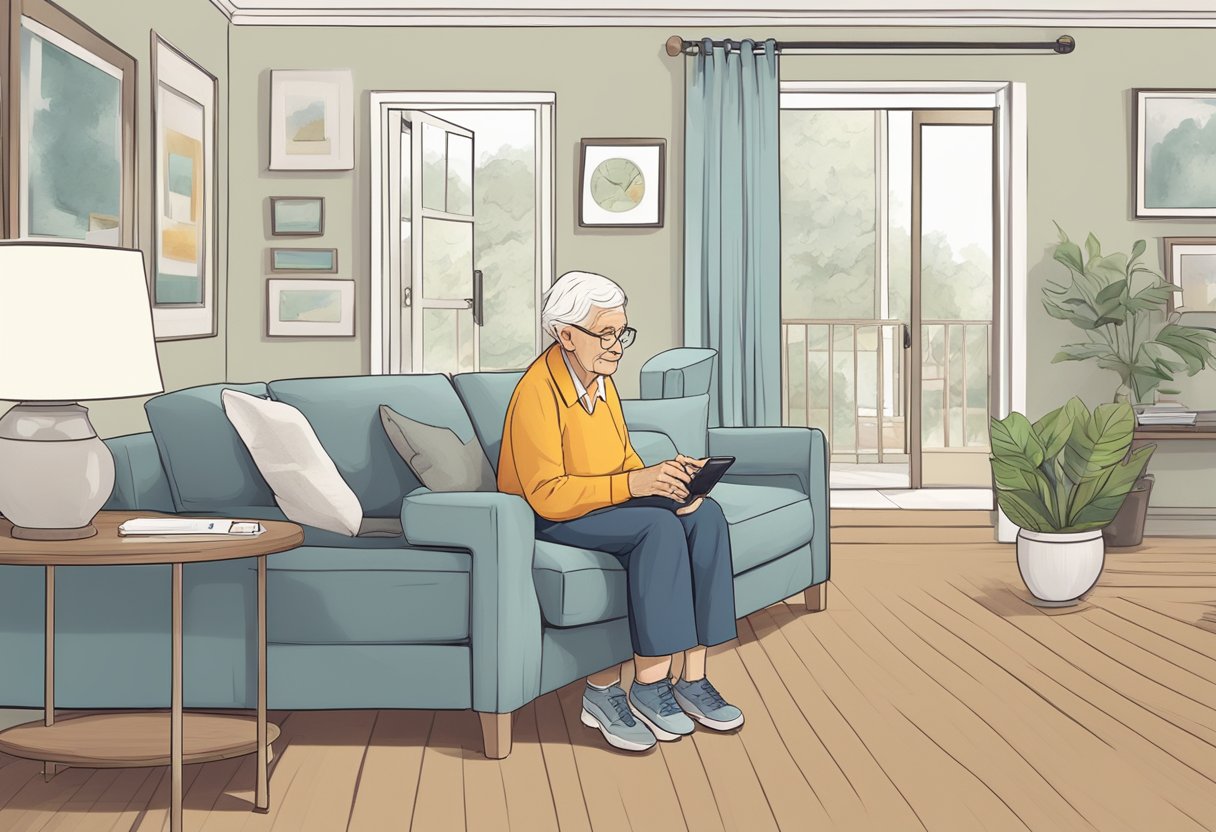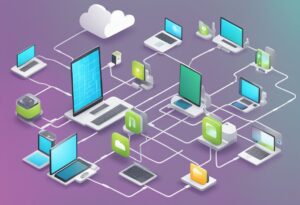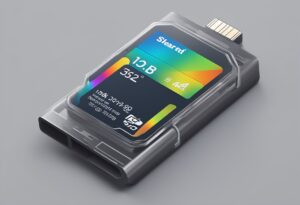The use of IoT devices in elderly care has revolutionized the way senior citizens are able to live their lives with increased safety and independence.
IoT devices are becoming increasingly popular in the healthcare industry due to their advanced sensing technologies, communication protocols, and data analytics techniques.
These devices have been designed to improve the quality of life for elderly people by providing a wide range of healthcare applications.
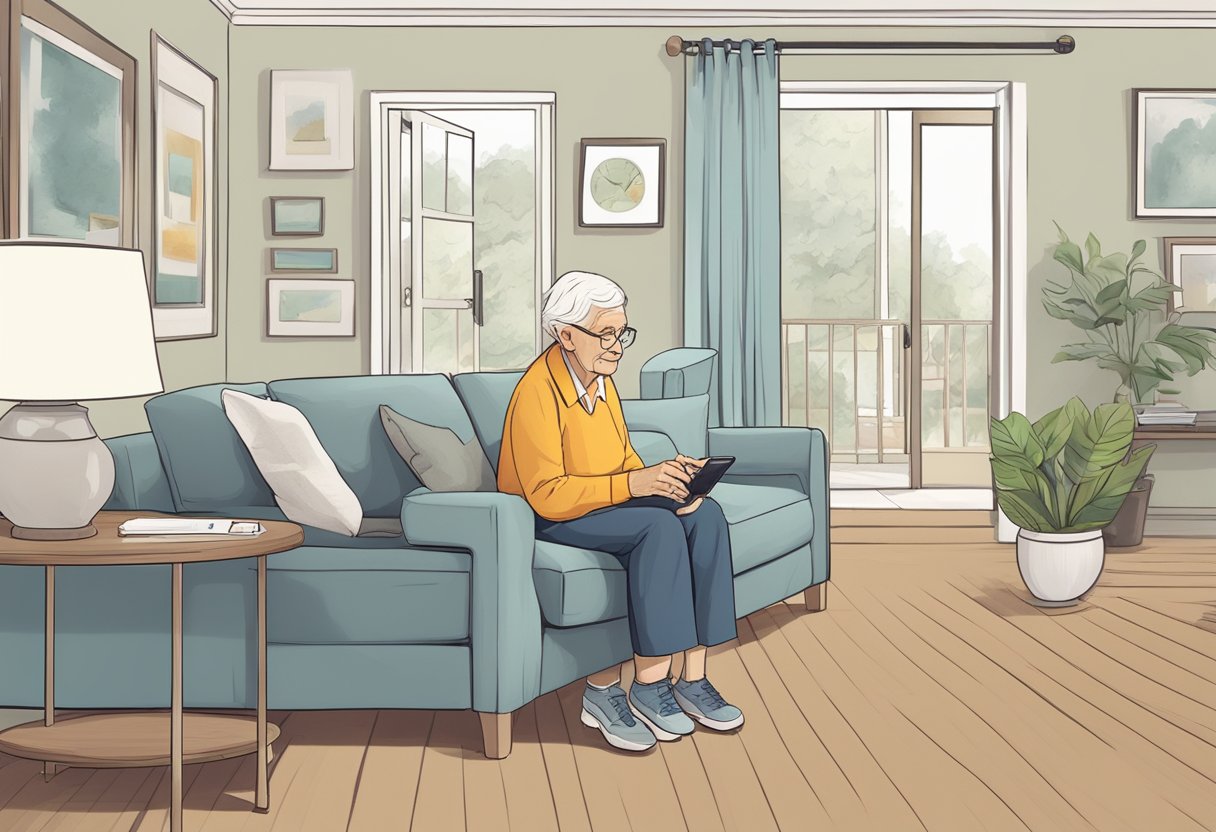
One of the most significant benefits of IoT devices in elderly care is the ability to promote safety enhancements.
IoT devices have been developed to detect falls and monitor sleep patterns, which can help predict potential health issues.
The data collected by these devices can be a powerful ally in maintaining the health and independence of our loved ones.
Additionally, smart home technology has been developed to provide elderly people with increased safety and security in their homes.
This technology includes features such as automatic lighting, remote monitoring, and emergency response systems.
Innovative IoT applications have also been developed to help manage chronic diseases in elderly people.
These devices can monitor vital signs, provide medication reminders, and track physical activity, helping to improve overall health outcomes.
Despite the many benefits of IoT devices in elderly care, there are also challenges and ethical considerations that need to be addressed.
Healthcare professionals need to be trained in the use of these devices, and privacy concerns must be taken into account.
Key Takeaways
- IoT devices have revolutionized elderly care by providing advanced sensing technologies, communication protocols, and data analytics techniques.
- IoT devices promote safety enhancements through features such as fall detection, sleep pattern monitoring, and smart home technology.
- Innovative IoT applications have been developed to manage chronic diseases, but ethical considerations and privacy concerns must be taken into account.
The Role of IoT in Elderly Care
Understanding IoT and Its Impact on Healthcare
The Internet of Things (IoT) has revolutionized the healthcare industry by introducing advanced sensing technologies, communication protocols, and data analytics techniques.
IoT devices have the potential to improve the quality of life of elderly people by providing a wide range of healthcare applications.
This technology has transformed the way healthcare is delivered, making it more efficient and accessible.
IoT devices in healthcare are designed to collect and transmit data in real-time, allowing healthcare providers to monitor and diagnose patients remotely.
These devices can monitor vital signs, track medication adherence, and detect falls, among other things.
They can also provide alerts and reminders to patients and caregivers, improving medication management and reducing the risk of adverse events.
Elderly Population and the Need for Support
The elderly population is growing rapidly, and with it comes an increased need for support and care.
Many elderly people suffer from chronic conditions that require ongoing monitoring and management.
They may also have mobility issues, making it difficult for them to leave their homes.
IoT devices can provide a solution to these challenges by enabling remote monitoring and care.
IoT devices can help elderly people maintain their independence while providing them with the support they need.
They can monitor activity levels, detect falls, and provide alerts to caregivers in case of an emergency.
They can also provide reminders for medication and appointments, reducing the risk of missed doses and appointments.
Safety Enhancements Through IoT Devices
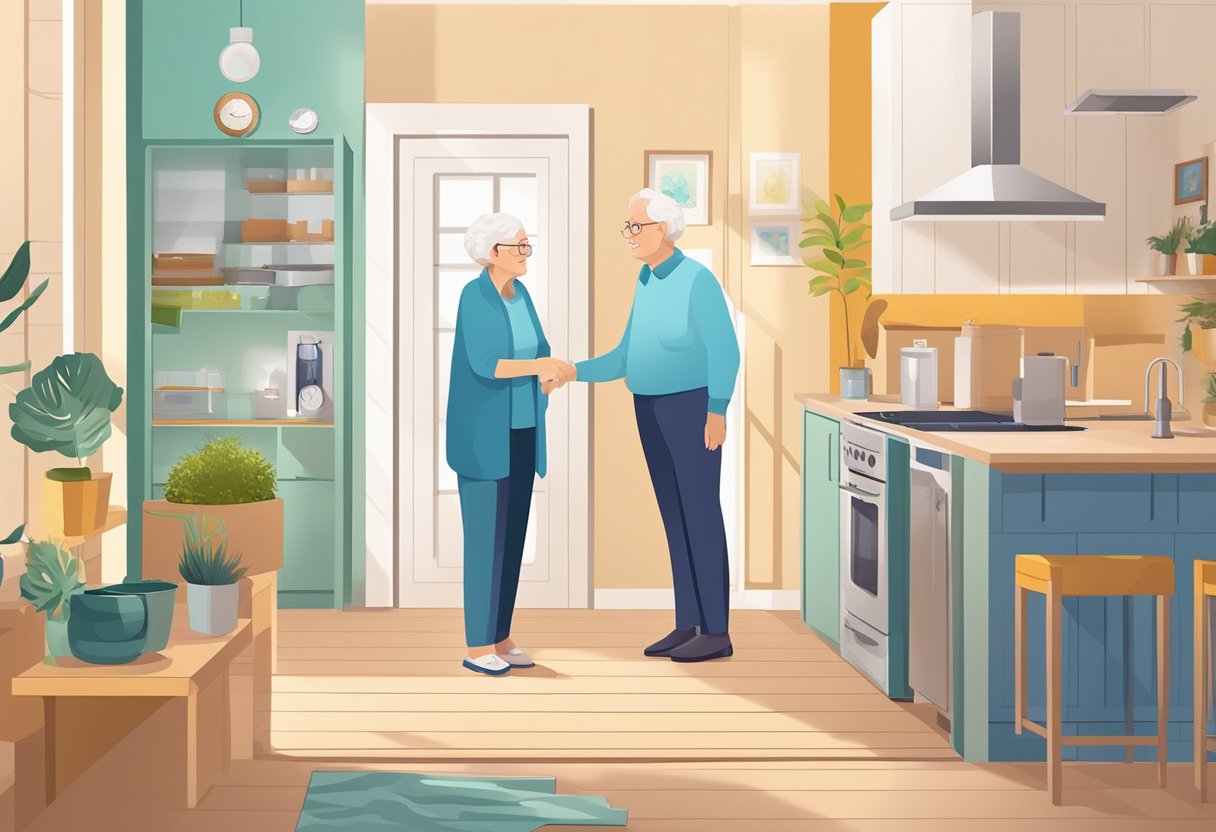
As the elderly population continues to grow, ensuring their safety and independence has become a primary concern for healthcare providers and caregivers. The Internet of Things (IoT) has emerged as a promising technology for enhancing the safety and well-being of the elderly.
By integrating IoT devices into the daily routines of the elderly, they can receive timely reminders, guidance, and assistance to maintain their well-being and independence.
Fall Detection and Alerting Systems
Falls are a major concern for the elderly, as they can lead to serious injuries and even death.
IoT devices such as wearable sensors, smart home systems, and cameras can be used to detect falls and alert caregivers or emergency services.
These devices can detect changes in motion, acceleration, and orientation to determine if a fall has occurred.
They can also use machine learning algorithms to distinguish between normal activities and falls.
Once a fall is detected, these devices can send alerts to caregivers or emergency services, providing them with the location and status of the elderly person.
Some devices can even provide audio or video communication between the elderly person and the caregiver, allowing for immediate assistance and reassurance.
Environmental Monitoring for Hazard Prevention
Environmental hazards such as fire, gas leaks, and flooding can pose a serious threat to the safety of the elderly.
IoT devices such as smart smoke detectors, gas sensors, and water leak detectors can be used to monitor the environment and alert caregivers or emergency services in case of an emergency.
These devices can detect changes in temperature, humidity, and air quality to determine if there is a potential hazard.
They can also send alerts to caregivers or emergency services, providing them with the location and status of the elderly person.
By detecting hazards early, these devices can prevent serious injuries and even save lives.
Promoting Independence with Smart Home Technology
As people age, maintaining independence becomes a priority for many. Smart home technology can help make this possible by providing elderly individuals with the tools they need to live safely and comfortably in their own homes.
Two key areas where smart home technology can be particularly beneficial are automated home systems and wearable devices for health monitoring.
Automated Home Systems and Elderly Autonomy
Smart home technology can help elderly individuals maintain their autonomy by automating various household tasks.
For example, automated lighting systems can be programmed to turn on and off at specific times, making it easier for elderly individuals to navigate their homes safely.
Smart thermostats can be programmed to maintain a comfortable temperature, eliminating the need for elderly individuals to manually adjust the temperature throughout the day.
Other smart home devices, such as voice-activated assistants and smart locks, can provide additional benefits.
Voice-activated assistants can help elderly individuals perform tasks such as setting reminders, making phone calls, and controlling other smart home devices.
Smart locks can be programmed to allow access only to authorized individuals, providing an additional layer of security.
Wearable Devices for Health Monitoring
Wearable devices can be used to monitor the health of elderly individuals, providing peace of mind for both the individuals themselves and their loved ones.
These devices can track a variety of health metrics, including heart rate, blood pressure, and activity levels.
They can also be programmed to send alerts to caregivers or emergency services if certain health parameters are exceeded.
Smart watches and fitness trackers are two examples of wearable devices that can be particularly beneficial for elderly individuals.
These devices can track activity levels, monitor heart rate, and provide reminders to take medication or perform other health-related tasks.
Challenges and Ethical Considerations
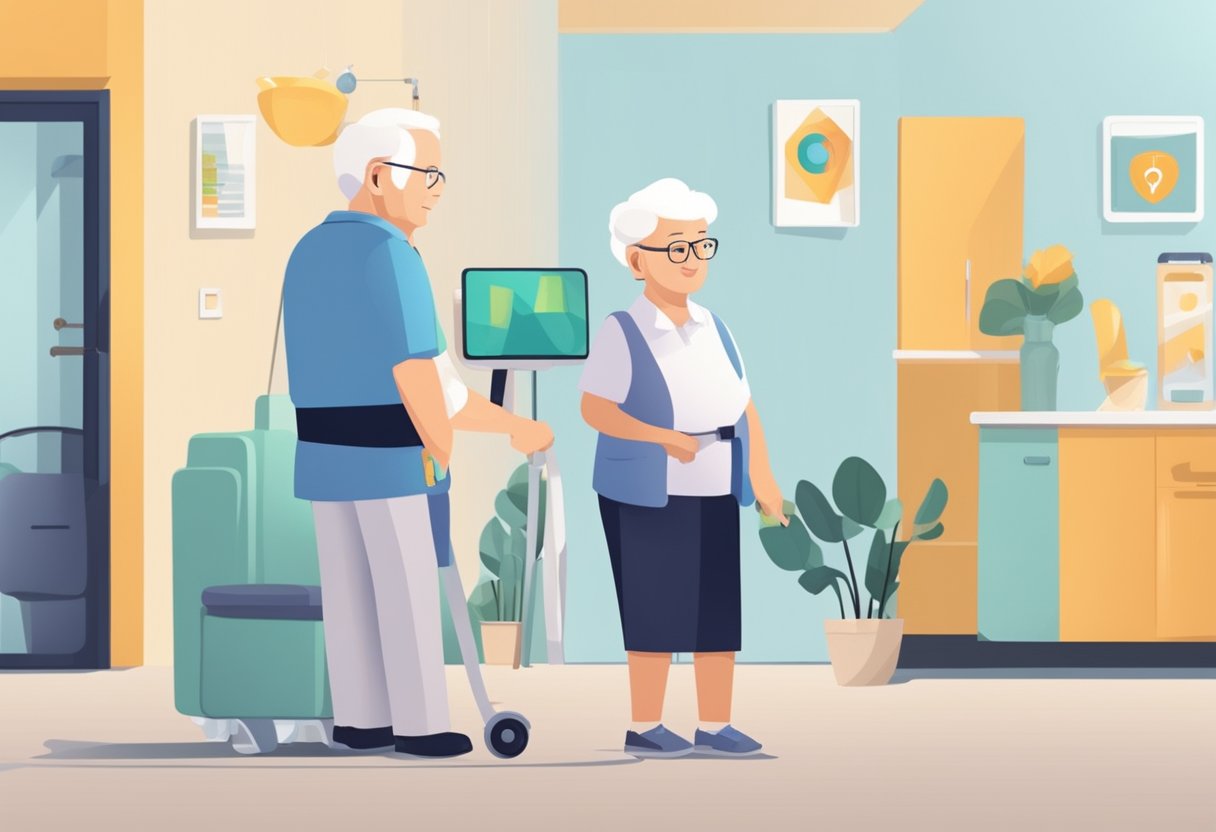
As with any new technology, IoT devices for elderly care come with their own set of challenges and ethical considerations. While these devices offer many benefits, it is important to consider the potential risks and drawbacks.
Privacy and Data Security Issues
One of the biggest concerns with IoT devices in elderly care is the potential for privacy and data security issues.
These devices collect and transmit sensitive information, such as health data and personal information, which can be vulnerable to cyber attacks and data breaches.
It is important to ensure that these devices have adequate security measures in place to protect against these risks.
Infrastructure and Cost Implications
Another challenge with IoT devices in elderly care is the infrastructure and cost implications.
Many of these devices require a reliable internet connection and a robust infrastructure to function properly. This can be a challenge in areas with poor internet connectivity or limited resources.
Additionally, these devices can be expensive, which may limit their accessibility to those who need them the most.
AI and Machine Learning in Elderly Care
With the advent of IoT devices, the elderly population can now enjoy a more secure and independent lifestyle. AI (Artificial Intelligence) and machine learning have also played a significant role in transforming elderly care.
Predictive Analytics for Preventive Care
Predictive analytics is an AI-based technology that can help predict potential health issues and prevent them before they occur.
By analyzing data from IoT devices, predictive analytics can identify patterns and trends that may indicate an underlying health problem.
This technology can also alert caregivers or healthcare professionals of any potential health concerns, allowing for early intervention.
Machine Learning for Personalized Interventions
Machine learning is another AI-based technology that can significantly improve elderly care.
By analyzing data from IoT devices, machine learning algorithms can create personalized interventions for the elderly.
These interventions can include reminders for medication, exercise routines, or even dietary recommendations.
Machine learning algorithms can also learn from the data collected over time and adjust interventions accordingly.
Remote Monitoring and Healthcare Professional Integration
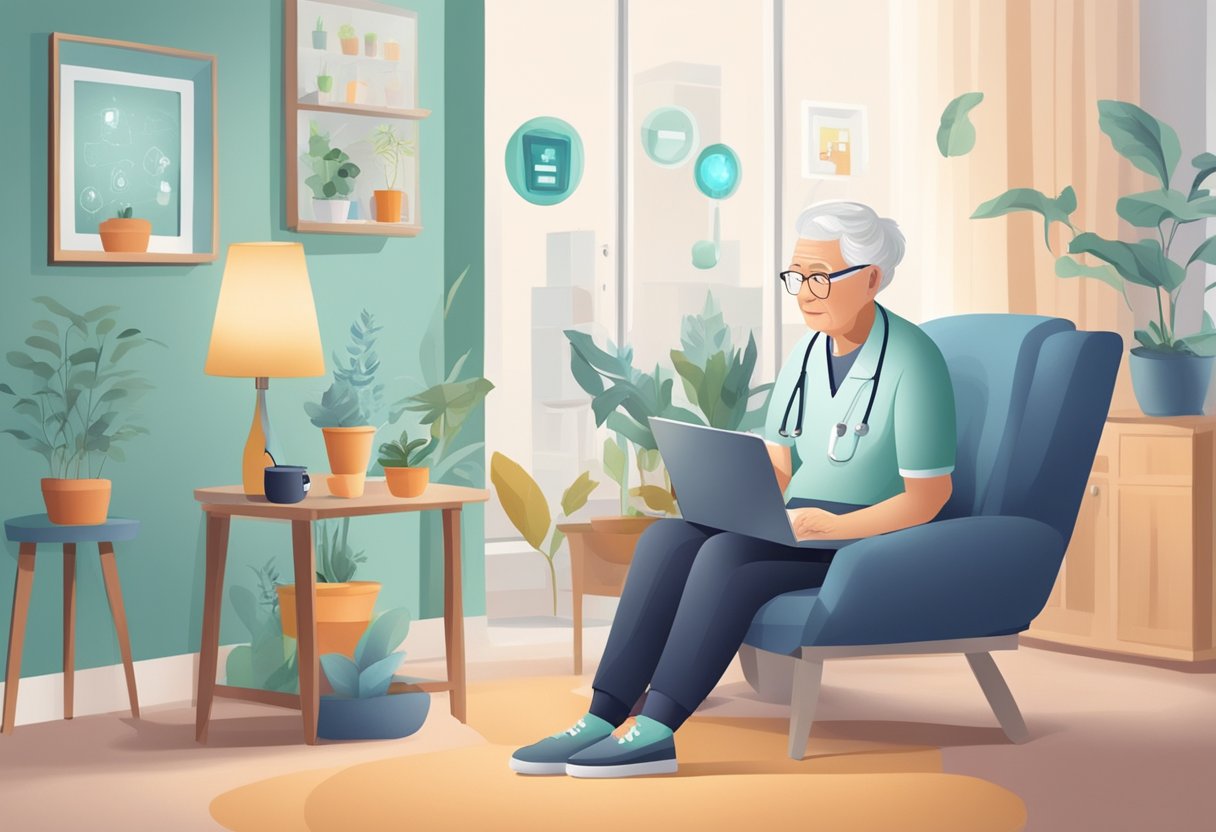
Remote monitoring is one of the most significant benefits of IoT devices in elderly care.
With the use of IoT devices such as wearables, sensors, and smart home devices, healthcare professionals can remotely monitor the health and well-being of elderly patients in real-time.
Telehealth and Real-time Health Data Analysis
Telehealth is a service that uses IoT devices to provide healthcare services remotely.
With the use of IoT devices, healthcare professionals can monitor the health of elderly patients and provide them with the necessary care and support they need.
Real-time health data analysis is another benefit of IoT devices in elderly care.
With the use of IoT devices, healthcare professionals can analyze real-time health data to detect any potential health issues and provide immediate care.
Collaboration Between IoT Systems and Healthcare Providers
Collaboration between IoT systems and healthcare providers is essential in elderly care.
Healthcare providers can use the data collected by IoT devices to monitor the health of elderly patients and provide them with the necessary care and support they need.
The collaboration between IoT systems and healthcare providers can also help in the early detection of health issues and provide timely interventions.
Innovative IoT Applications for Chronic Disease Management
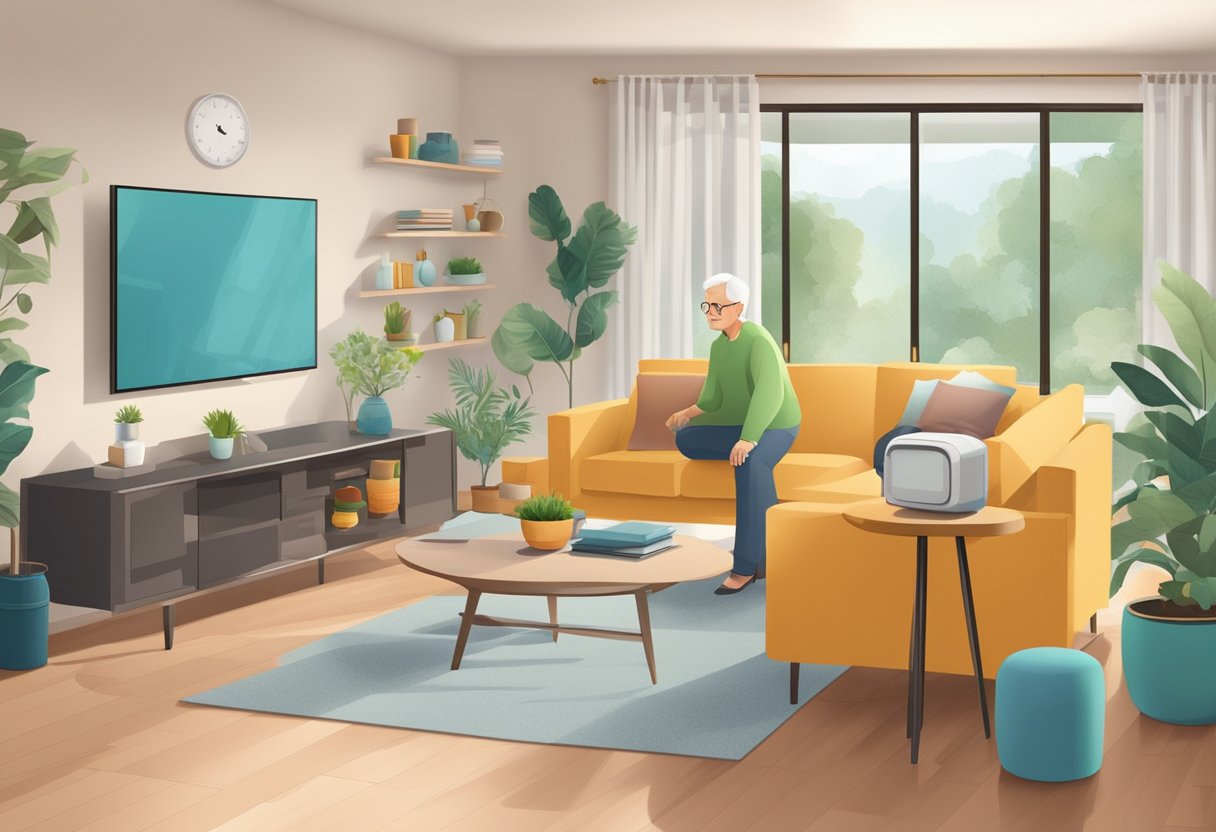
Chronic diseases such as heart disease, diabetes, and hypertension are common among the elderly population.
IoT technology offers promising tools for reducing the burden of chronic diseases.
Wearable sensors and IoT devices can provide continuous monitoring of vital signs, medication adherence, and rehabilitation for the elderly population.
Wearable Sensors for Continuous Vital Signs Tracking
Wearable sensors are small, lightweight devices that can be worn on the body to monitor vital signs.
These sensors can track heart rate, blood pressure, oxygen saturation, and other vital signs.
The data collected by these sensors can be transmitted wirelessly to healthcare providers or caregivers for analysis.
This technology can be especially useful for elderly patients who have chronic diseases that require continuous monitoring.
Wearable sensors can help healthcare providers detect changes in vital signs that may indicate a worsening of the patient’s condition.
This can lead to earlier intervention and better outcomes for the patient.
IoT in Medication Adherence and Rehabilitation
IoT technology can also be used to improve medication adherence and rehabilitation for elderly patients with chronic diseases.
IoT devices can be used to remind patients to take their medication at the appropriate time.
This can help patients adhere to their medication regimen and avoid complications from missed doses.
IoT devices can also be used to provide rehabilitation for elderly patients with chronic diseases.
For example, IoT devices can be used to monitor the patient’s movements during physical therapy exercises.
This can help healthcare providers track the patient’s progress and adjust the treatment plan as needed.
The Future of IoT in Elderly Care

As the elderly population continues to grow, there is an increasing need for innovative solutions that can enhance their safety and independence.
IoT devices have already started making a significant impact in the healthcare industry, and they are poised to revolutionize elderly care as well.
In this section, we will explore the emerging trends in IoT healthcare solutions and the evolution of elderly care ecosystems.
Emerging Trends in IoT Healthcare Solutions
One of the most significant trends in IoT healthcare solutions is the use of cloud computing.
Cloud-based solutions offer several benefits, including scalability, cost-effectiveness, and real-time data analysis.
By leveraging cloud computing, healthcare providers can collect and analyze large amounts of data from IoT devices, providing personalized care to each patient.
Another trend is the use of ambient assisted living (AAL) technologies.
AAL technologies use sensors and other IoT devices to monitor the environment and provide assistance to elderly individuals.
For example, smart home systems can detect falls and alert caregivers or emergency services.
The Evolution of Elderly Care Ecosystems
The evolution of elderly care ecosystems is another critical aspect of the future of IoT in elderly care.
IoT devices can help create a more integrated and connected care ecosystem, where caregivers, healthcare providers, and family members can collaborate to provide the best possible care to elderly individuals.
Robotics is another area where IoT devices can make a significant impact.
Robots can assist with daily tasks, such as cleaning and cooking, and provide companionship to elderly individuals.
They can also be used to monitor vital signs and detect health issues in real-time, allowing for early intervention and treatment.
Frequently Asked Questions
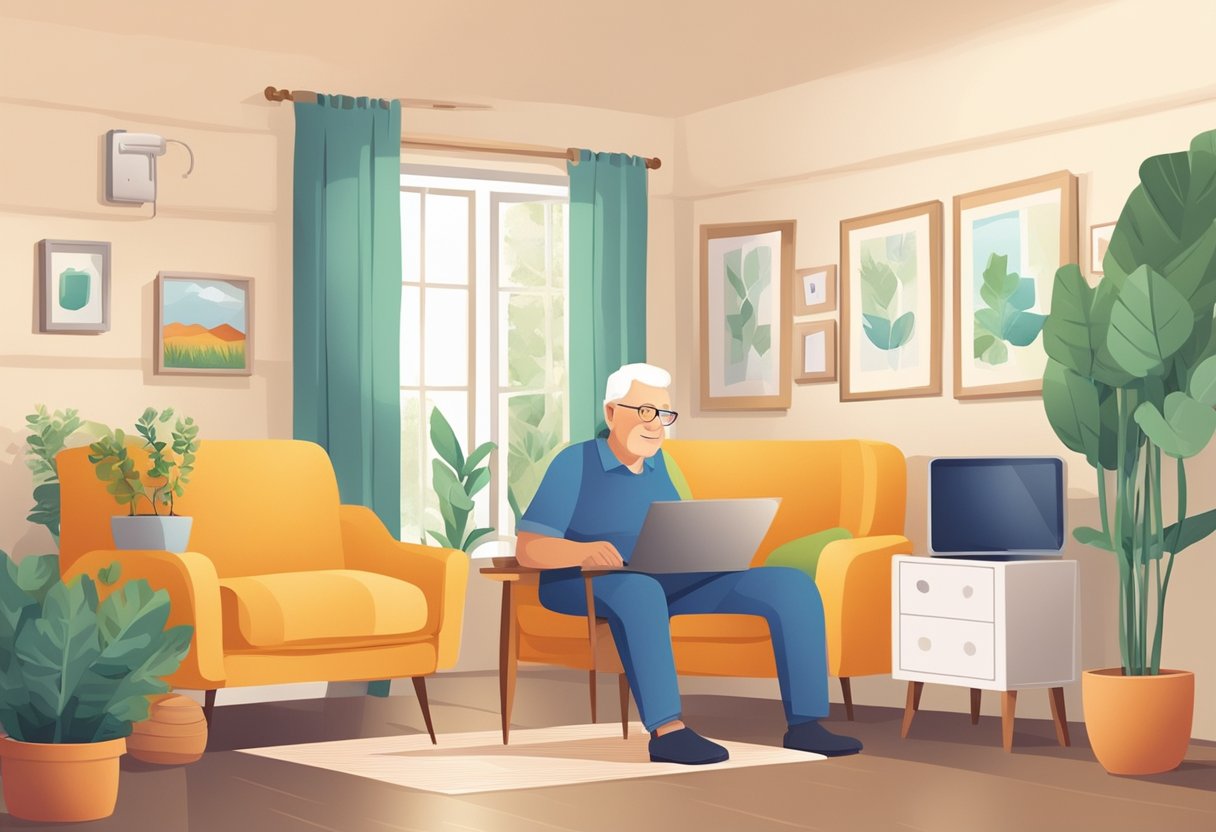
What are the benefits of using IoT devices for monitoring the health of seniors?
IoT devices can provide real-time monitoring of seniors’ vital signs, activity levels, and medication adherence.
This information can be used to identify potential health issues before they become serious, allowing for earlier intervention and treatment.
IoT devices can also help seniors manage chronic conditions by providing reminders to take medication, monitoring blood sugar levels, and tracking symptoms.
How do smart home technologies contribute to the safety of the elderly living alone?
Smart home technologies, such as automated lighting and temperature control, can help seniors feel more secure in their homes.
IoT devices can also detect falls and other emergencies and alert caregivers or emergency services.
Additionally, smart home technologies can provide remote access to family members and caregivers, allowing them to check in on seniors and ensure their safety.
In what ways can wearable IoT devices enhance the independence of older adults?
Wearable IoT devices, such as smart watches and fitness trackers, can help seniors stay active and engaged.
These devices can track physical activity, monitor sleep patterns, and provide reminders to stay hydrated or take medication.
Wearable IoT devices can also provide social connectivity, allowing seniors to stay connected with family and friends.
What role do IoT devices play in emergency response for seniors?
IoT devices can play a critical role in emergency response for seniors.
Fall detection sensors can alert caregivers or emergency services if a senior falls and is unable to get up.
GPS tracking devices can help locate seniors who wander or become lost.
Additionally, IoT devices can provide real-time health data to emergency responders, allowing for more effective treatment.
How can IoT solutions improve the management of chronic conditions in elderly patients?
IoT solutions can improve the management of chronic conditions in elderly patients by providing real-time monitoring of symptoms and medication adherence.
This information can be used to adjust treatment plans and prevent complications.
IoT devices can also provide remote access to healthcare providers, allowing for more frequent check-ins and adjustments to treatment plans.
What are the privacy and security implications of using IoT devices in elderly care?
Privacy and security are important considerations when using IoT devices in elderly care.
Caregivers and family members must ensure that sensitive health data is kept secure.
They also need to ensure that IoT devices are not vulnerable to hacking or other security breaches.
Additionally, seniors must be informed about how their data is being used.
They should also have the ability to control access to their information.

